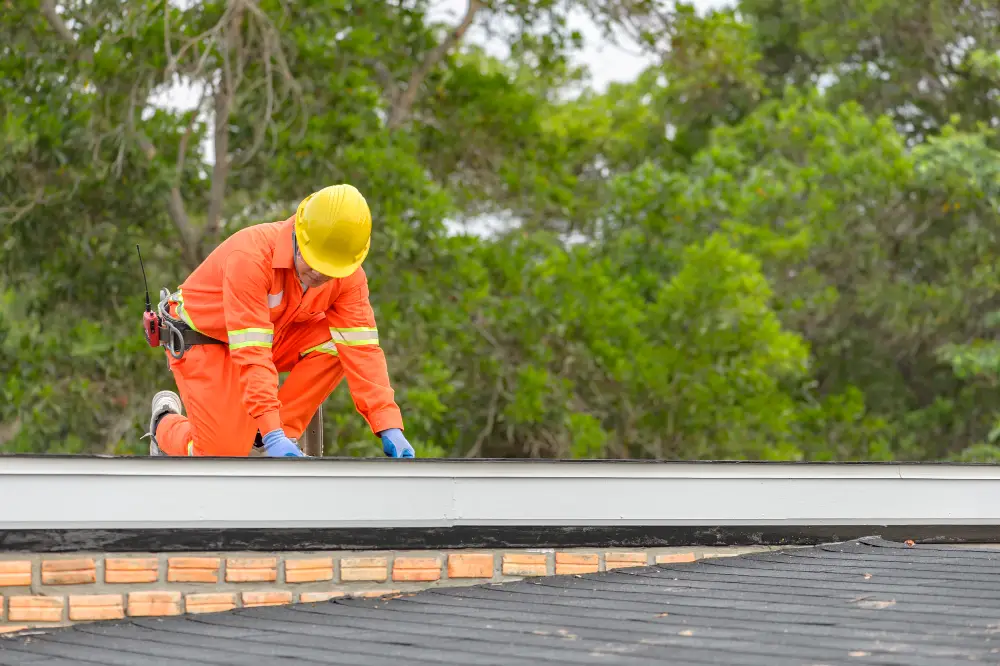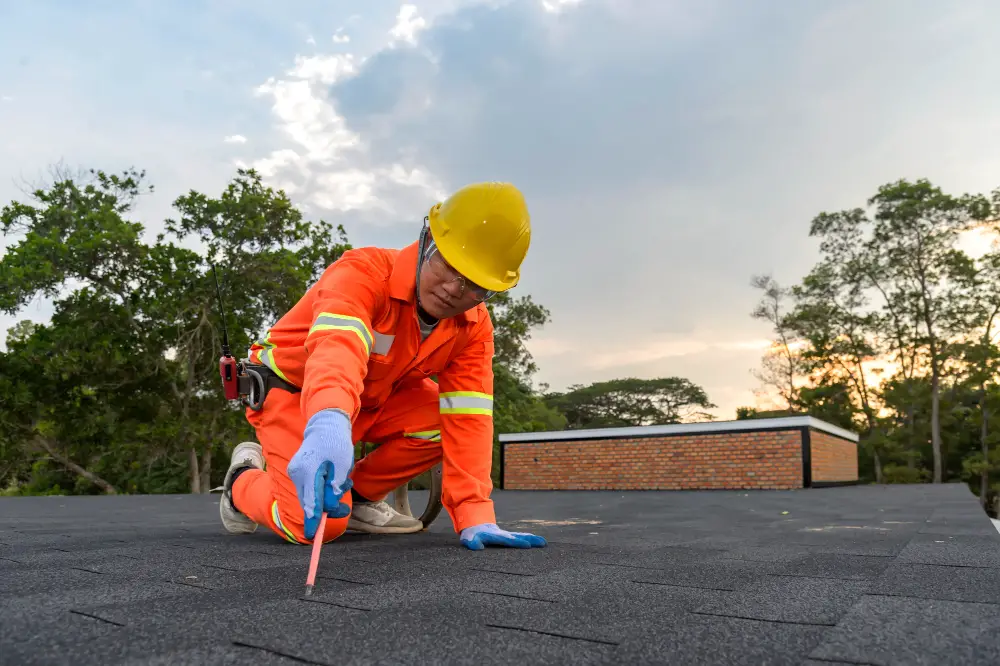Last updated on
The roof is one of the most significant parts of any home, serving primary functions of protection, insulation, and structural integrity. But just like any critical system, roofs require ongoing attention and care to maintain their condition and performance over time.
Ignoring routine maintenance can lead to severe consequences, including structural damage, mold growth, and costly emergency repairs. Being proactive about roof care ensures that minor issues can be caught and remedied before they evolve into more significant problems.
This is where regular check-ups and repairs by a skilled roofer come into play, providing homeowners with peace of mind and potentially extending the lifespan of their roofs by years or even decades.
What's Inside
The Basics of Roof Inspection

Self-inspection is a homeowner’s first defense in detecting early signs of roof trouble. Careful observation can identify damaged or missing shingles, cracked flashing, or blocked roof vents. Even more subtle signs, like granules from asphalt shingles accumulating in gutters or downspouts, could signal that a roof is nearing the end of its service life.
Homeowners must understand that these inspections are about assessing visible issues from a safe location; they should not involve climbing onto the roof. Homes should feature a dedicated maintenance checklist that adapts to the changing seasons and specific types of residential roofing materials.
Professional Roof Inspection and Maintenance
While homeowners can perform basic checks, detailed inspections are best left to professionals. An expert roofer San Marcos, is equipped to find and diagnose problems not apparent to the untrained eye. They utilize a comprehensive approach examining the roof surface internal structures, insulation, and ventilation systems.
Their assessments usually follow a systematic checklist covering every aspect of roof health, from the proper function of gutters and downspouts to the condition of seals and joints. Beyond inspections, professional maintenance can also involve sealing minor leaks, replacing damaged shingles, and clearing overhanging tree limbs, which might otherwise threaten the roof’s integrity.
Addressing Common Roof Issues

Leaks, mold, and shingle damage are some of the most common issues that signal the need for roof maintenance. When these problems surface, homeowners must act promptly to avoid further complications.
Dealing with leaks requires quick identification of the source, followed by temporary measures like catch buckets or tarps to mitigate water ingress until professional repairs can be made. Preventing mold and algae is another critical concern, especially in humid climates where these issues are more prevalent.
Establishing a preventive routine that includes periodic cleaning of roof surfaces and ensuring adequate air circulation can help keep these irritants at bay. Lastly, maintaining shingles’ integrity is instrumental in preserving the roof’s overall health.
From repairing minor cracks and splits to replacing entire sections that may have been lost to wind or fallen debris, timely attention to shingles is essential in extending the roofing system’s life.
The Impact of Weather on Your Roof
Adverse weather conditions can wreak havoc on roofs. From the blistering heat of summer to the ice and snow of winter, Mother Nature tests the resilience of roofing materials year-round. For instance, ice dams formed during freeze-thaw cycles can trap water on the roof, potentially leading to wood rot and leaks, while high winds can loosen or remove shingles altogether.
To mitigate the impact of severe weather, homeowners should prepare in advance by securing loose shingles and cleaning gutters to allow proper drainage. A post-storm damage assessment is also crucial for identifying any damage that might not be immediately visible. In many cases, the expertise of a seasoned professional can be invaluable in detecting and repairing weather-related damage promptly and effectively.
Gutter Maintenance and Its Effect on Roof Health
The gutters play an underrated yet vital role in preserving roof health. They channel rainwater away from the roof and foundation, but when they become clogged with leaves, twigs, or other debris, they can cause water to back up, leading to fascia damage, roof rot, and even interior leaks.
Homeowners should ensure that gutters are cleaned at least twice a year after fall leaves have dropped and again in spring when seed pods, flower petals, and other debris accumulate. Installing gutter guards may also be a worthwhile investment to keep debris out while allowing water to flow freely. These maintenance tasks can prevent costly repairs and ensure the roof remains healthy for years.
Planning for Roof Renovations and Upgrades
When roof repairs are no longer cost-effective, consider a renovation or upgrade. This can be an opportunity to select materials that are more durable, energy-efficient, and better suited to the local climate than the previous roofing.
Newer options include synthetic shingles that mimic traditional materials, metal roofing known for its longevity, and energy-efficient tiles. Additionally, advancements in roofing technology have introduced features such as integrated solar panels, which can offer long-term energy savings.
When planning a roof renovation, evaluating its various materials carefully, considering their lifespan and warranty, and choosing based on functionality and aesthetics is essential.
The Takeaway: Investing in Your Roof’s Future
A sturdy and well-maintained roof is the cornerstone of a safe and sound home. By embracing routine maintenance, employing eco-friendly practices, and planning for future upgrades, homeowners can protect their investments and enjoy a durable, functional, and aesthetically pleasing roof for many years.
Proper care for a roof begins the moment it is installed and continues throughout its service life, with each check-up and maintenance session bolstering its defenses against the elements. Consider this ongoing commitment not as a series of costs but as investments in your home’s comfort, safety, and value. In doing so, you can ensure that your roof continues to perform its vital role effectively, regardless of the future.




